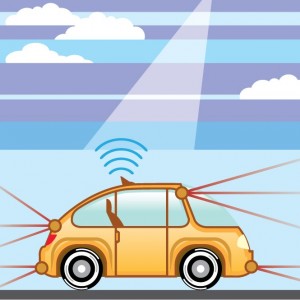How will driverless vehicles resolve right-of-way issues? The answer isn't clear

Image from Shutterstock.
As young attorneys see after graduating from law school, there is often a disconnect between formal legal rules and the way law is actually practiced.
A similar learning curve is still ongoing for driverless cars.
Taught to follow traffic laws to the letter, the vehicles sometimes have difficulty adjusting to the way humans actually drive, the New York Times (reg. req.) reports.
In a 2009 test, for example, Google’s self-driving car was stymied by a four-way stop because it kept waiting for other drivers to come to a full stop. That, of course, didn’t happen.
Recently, safety expert Bill Windsor of Nationwide Insurance went for a drive in his new Volvo, which has “adaptive cruise control.” The system prevents the driver from getting too close to the vehicle ahead. But, by leaving a safe following distance, it also allows other drivers to cut in during heavy traffic, which a number did, the newspaper reports.
Google is working on adaptations such as allowing its self-driving vehicle to inch forward at four-way stops and look for signs of an opening to move through the intersection, a spokeswoman said.
However, it still isn’t clear what will substitute for the traditional method of resolving right-of-way issues—eye contact between drivers. “On the fly, they make agreements about who has the right of way,” said professor John Lee of the University of Wisconsin. He specializes in industrial and systems engineering, as well as driver safety and automation.
“Where are the eyes in an autonomous vehicle?” he wondered aloud.



